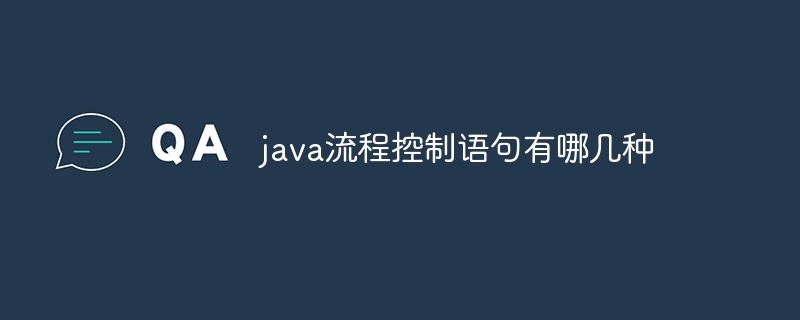
Java flow control statements: 1. if statement; 2. if-else statement; 3. if-else if-else statement; 4. switch statement; 5. while statement; 6. do-while statement; 7. for statement; 8. for-each loop; 9. break statement; 10. continue statement. Detailed introduction: 1. if statement, used to execute a code block based on specific conditions; 2. if-else statement, used to execute two different code blocks based on two conditions, etc.

The operating system for this tutorial: Windows 10 system, DELL G3 computer.
Java flow control statements mainly include the following types:
1. if statement: is used to execute code blocks based on specific conditions.
if (condition) {
// code to execute if the condition is true
}2. if-else statement: is used to execute two different code blocks based on two conditions.
if (condition) {
// code to execute if the condition is true
} else {
// code to execute if the condition is false
}3. if-else if-else statement: is used to execute multiple different code blocks based on multiple conditions.
if (condition1) {
// code to execute if condition1 is true
} else if (condition2) {
// code to execute if condition2 is true
} else {
// code to execute if neither condition1 nor condition2 is true
}4. Switch statement: is used to execute different code blocks based on different situations. Usually used in multiple selection situations, such as executing different blocks of code based on the value of a variable.
switch (variable) {
case value1:
// code to execute if variable equals value1
break;
case value2:
// code to execute if variable equals value2
break;
default:
// code to execute if variable does not match any value in the switch statement
}5. While statement: is used to repeatedly execute a piece of code until the specified condition is no longer met.
while (condition) {
// code to execute repeatedly until the condition becomes false
}6. do-while statement: Similar to the while statement, but the code block will be executed at least once and then the condition will be checked. If the condition is true, execution of the code block continues.
do {
// code to execute at least once, then repeatedly if the condition is true
} while (condition);7. for statement: is used to repeatedly execute a piece of code a specified number of times. It consists of three basic parts: initialization, conditions and subsequent operations.
for (initialization; condition; update) {
// code to execute repeatedly until the condition becomes false
}8. for-each loop (enhanced for loop): Used to traverse the elements in an array or collection. It does not need to know the size of the collection, but automatically handles indexing and iteration of elements.
for (element : collection) {
// code to execute for each element in the collection
}9. Break statement: is used to jump out of the current loop or switch statement immediately. It can be used with loops or switch statements to exit early when certain conditions are met.
10. Continue statement: is used to skip the remaining part of the current loop and start the next iteration. It can be used with loops to skip the current iteration when certain conditions are met.
The above is the detailed content of What are the types of java flow control statements?. For more information, please follow other related articles on the PHP Chinese website!
